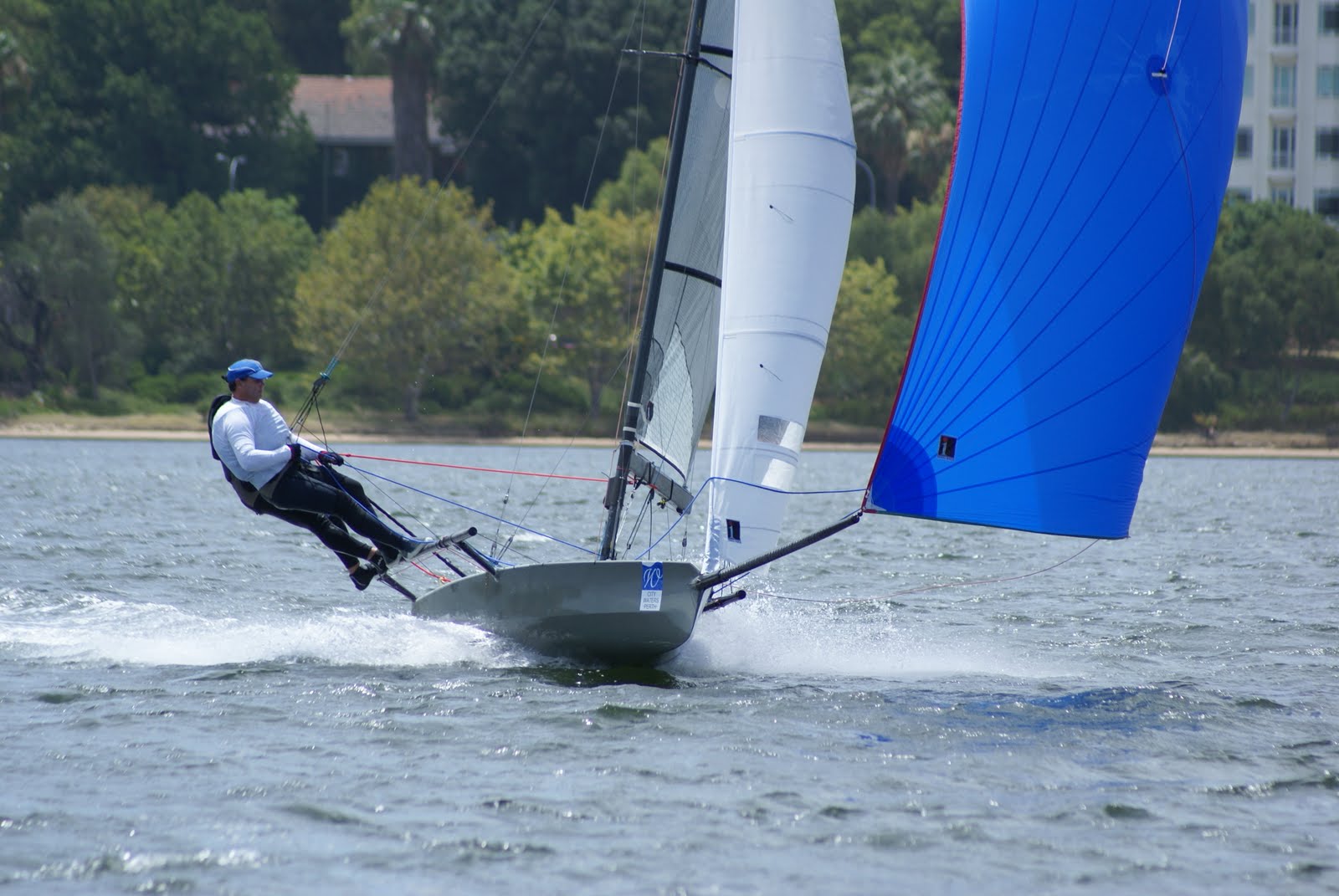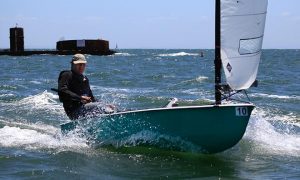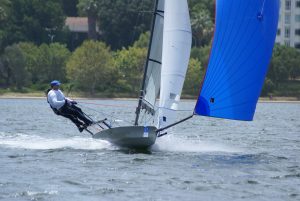


To get an insight into Assessing a Regatta Venue and Big Fleet Strategy, I spoke with Roger Blasse from Melbourne, Australia. Roger has won 11 National and 2 World championships in the OK dinghy and is also a front-running competitor in the International 14′ skiff, a very technical development class.
Brett: When you’re going to a regatta, how long before the racing starts do you arrive and get on the water?
I think you need to get there and at least get a couple of sails in. A couple of sails before you go to the invite race. So, I’d suggest at least three days beforehand.
If there’s a pre-regatta see if you can do that. If you’ve got the time, you should maybe get there three days early. if there’s a pre-regatta try and get there earlier and do that. It’s important to just get knowledge of where you’re going to be sailing.
Do you have any secrets to preparing for a regatta? Is there anything that you do to prepare yourself mentally and prepare your boat?
The first thing I think you need to do is you need to decide whether you’re going to do the regatta or not.
And usually, I think like nine months out, you need to make that decision. And as that time gets closer I mean obviously the first things you’ve got to work on is what you got to take…practicing in sailing and working on your fitness.
So speaking about the venue, how do you gather local knowledge regarding wind, currents and weather? Have you got a particular thing you do? Assessing a Regatta Venue and Big Fleet Strategy
The first step is to maybe have a chat with people who’ve been there before which is very important.
And obviously, even if they’re outside your class, have a look at the last Worlds. Who has been there, maybe get on the website and have a look at the report.
Have a look at the results and see where some of the Aussies went and just from the people that have been there you’ll understand whether they are a light or heavy crew and so forth.
I think the next thing is getting on the internet.
There are plenty of sites that you can have a look at and just check what the winds are going to be like during that period.
As we all know that sometimes the weather isn’t exactly what it’s meant to be. Go with the knowledge it will be what it will be. You have to adapt to what the wind strength will be and the conditions.
So it all comes back to preparation. So let’s talk a little bit about championship and regatta strategy. Do you have a plan to deal with other competitors or do you simply sail your own race?
I try and sail my own race in general terms. I think it’s important, particularly in a larger fleet. There are going to be at least 10 people that are just as good or just as competitive as yourself.
If you start to hone in on a particular person then I think you’re risking the other nine boats. So it’s important to just sail your own race and use the strategies that you’ve got, you feel comfortable with and the knowledge that you’ve got, tactically and try and sail as well you can.
You do have to be mindful of the fleet during the course of the regatta and make sure that you are keeping them in the back of your mind. But in general sail your own race.
One of the problems we have is that at home we sail in much smaller fleets.When you do go away to a worlds, you have rarely sailed in fleets that big. You have to think about it beforehand, not just get out there and say now what do I do? Assessing a Regatta Venue and Big Fleet Strategy
It’s one of those things you don’t know until you’ve done it. Certainly, if you haven’t sailed in a big fleet before it can be quite daunting. Especially if it’s 20 knots and there are 80 boats reaching around before the start.
If you’ve never been in that type of scenario and particularly if you’re in a 14 that’s travelling at 12 knots, it’s being mindful and looking out, boats can pop up out of nowhere.
Have you got any basic strategies for big fleets is there anything you plan before you go out for instance?
Well, I think when you got a big fleet you’ve got to be…before the start you got to have a look up the course and commit to your strategy uphill.
If you’ve committed to the strategy you then can concentrate on sailing the fleet a little bit.
One of the most important things is to make sure you have a clear air lane. So just after the start be mindful of where you’re going to go and how to maintain that clear air lane.
You might not be sailing always on the lift. If you’ve got a clear lane you probably got another half and knot split over everyone else. So that can take up an account for any loss whether you’re sailing on a knock or a lift.
It’s also worth noting that as the breeze rotates, you’re positioned in the right spot for that rotation. So don’t get the mentality where you’re always thinking I’ve got to cross that boat. I’ve got to cross that line of boats.
If it’s already knocked, don’t worry about crossing them just tack straight away to get a clear air lane. Then you can maintain that longer than the remainder of the fleet.
If you suddenly find you have dropped back in the fleet, what are some of the things you shouldn’t do? You may have dropped back unexpectedly, what shouldn’t you do?
Well, I think as I mentioned before, you shouldn’t panic.
You shouldn’t try and take the whole fleet in one flier. We’ve all found ourselves in that position and it’s very tempting to do that.
The other thing is to look outside of the boat and really start to look at what’s happening out on the course.
So don’t stress too much about where you are, try and just start afresh and have a look at what you can do to improve.
#sailingtowin #sail #yachtrace #sailingcoach #sailtowin #sailing #yacht

